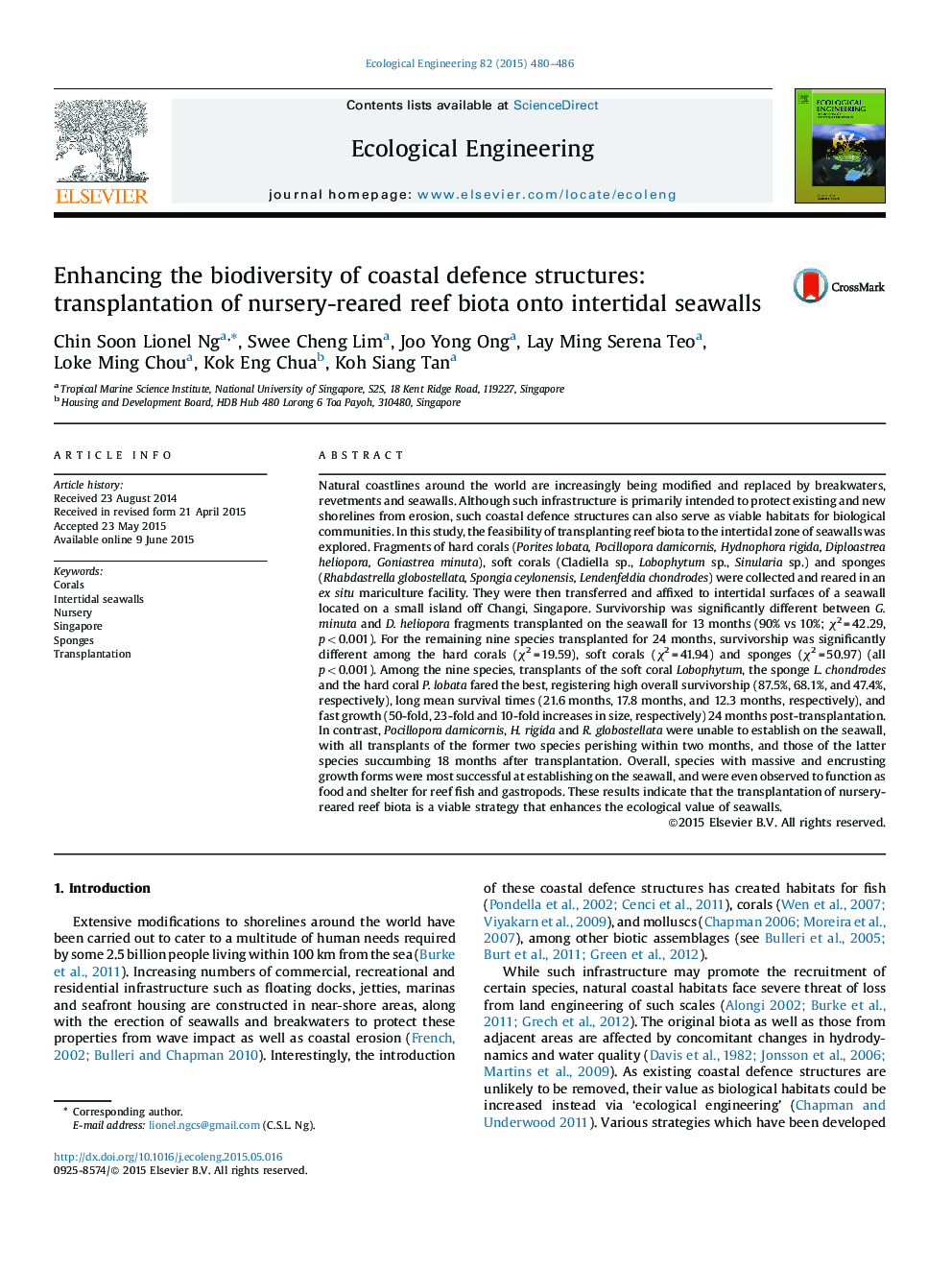| کد مقاله | کد نشریه | سال انتشار | مقاله انگلیسی | نسخه تمام متن |
|---|---|---|---|---|
| 4388998 | 1618017 | 2015 | 7 صفحه PDF | دانلود رایگان |
• Fragments of hard corals, soft corals and sponges were reared in a nursery.
• They were transplanted at the intertidal zone of a seawall in Singapore.
• Species with massive and encrusting growth forms fared the best.
• The surviving transplants provided food and shelter to other marine animals.
• Transplantation is a feasible way of enhancing the ecological value of seawalls.
Natural coastlines around the world are increasingly being modified and replaced by breakwaters, revetments and seawalls. Although such infrastructure is primarily intended to protect existing and new shorelines from erosion, such coastal defence structures can also serve as viable habitats for biological communities. In this study, the feasibility of transplanting reef biota to the intertidal zone of seawalls was explored. Fragments of hard corals (Porites lobata, Pocillopora damicornis, Hydnophora rigida, Diploastrea heliopora, Goniastrea minuta), soft corals (Cladiella sp., Lobophytum sp., Sinularia sp.) and sponges (Rhabdastrella globostellata, Spongia ceylonensis, Lendenfeldia chondrodes) were collected and reared in an ex situ mariculture facility. They were then transferred and affixed to intertidal surfaces of a seawall located on a small island off Changi, Singapore. Survivorship was significantly different between G. minuta and D. heliopora fragments transplanted on the seawall for 13 months (90% vs 10%; χ2 = 42.29, p < 0.001). For the remaining nine species transplanted for 24 months, survivorship was significantly different among the hard corals (χ2 = 19.59), soft corals (χ2 = 41.94) and sponges (χ2 = 50.97) (all p < 0.001). Among the nine species, transplants of the soft coral Lobophytum, the sponge L. chondrodes and the hard coral P. lobata fared the best, registering high overall survivorship (87.5%, 68.1%, and 47.4%, respectively), long mean survival times (21.6 months, 17.8 months, and 12.3 months, respectively), and fast growth (50-fold, 23-fold and 10-fold increases in size, respectively) 24 months post-transplantation. In contrast, Pocillopora damicornis, H. rigida and R. globostellata were unable to establish on the seawall, with all transplants of the former two species perishing within two months, and those of the latter species succumbing 18 months after transplantation. Overall, species with massive and encrusting growth forms were most successful at establishing on the seawall, and were even observed to function as food and shelter for reef fish and gastropods. These results indicate that the transplantation of nursery-reared reef biota is a viable strategy that enhances the ecological value of seawalls.
Journal: Ecological Engineering - Volume 82, September 2015, Pages 480–486
